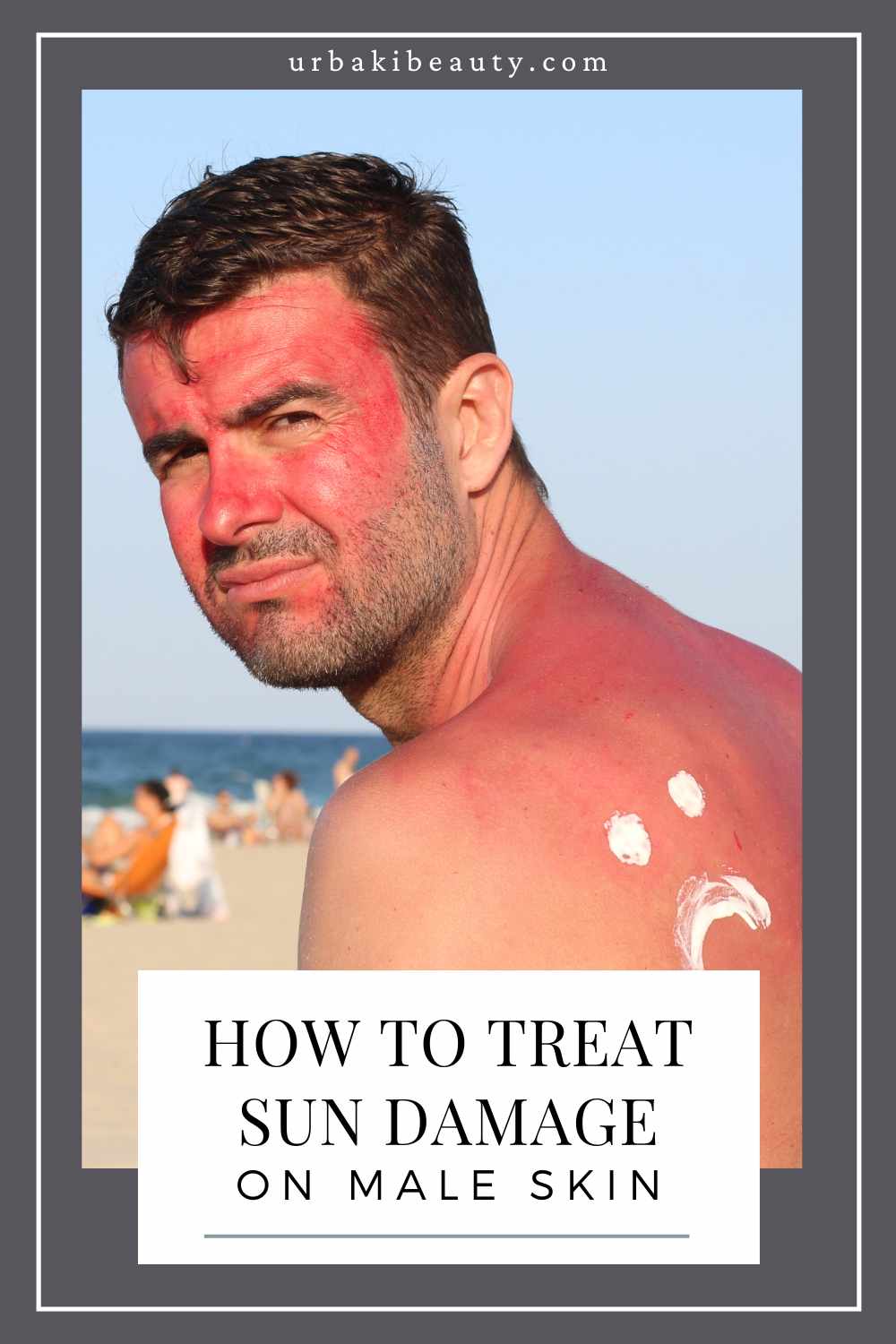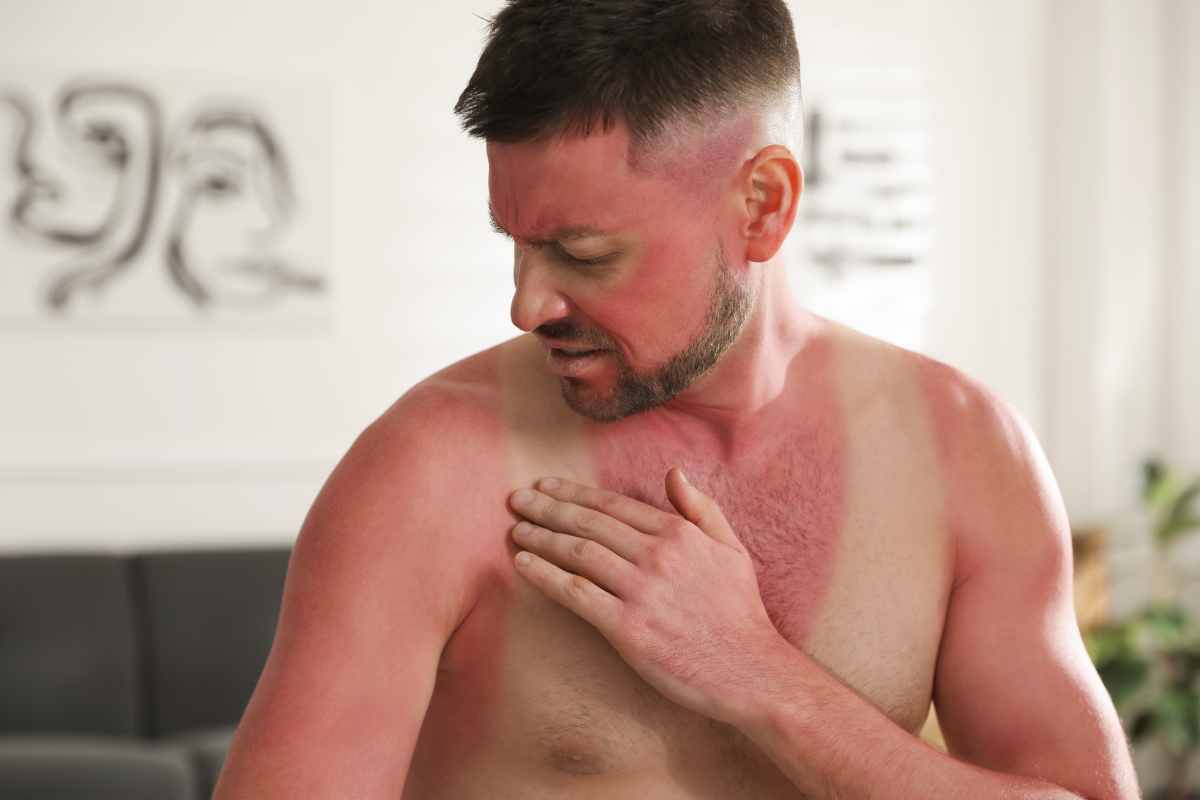How to Treat Sun Damage on Male Skin

Sun exposure is one of the leading causes of skin aging and various skin issues, and while it’s commonly linked to women’s skincare, sun damage is a serious concern for men as well.
Men are often less likely to pay attention to the effects of the sun on their skin, but this doesn’t mean they’re immune to its harmful effects. From sunburns to premature aging and even skin cancer, the consequences of sun damage are widespread.
This article will delve into how to effectively treat sun damage on male skin, providing insight into both prevention and repair.
Understanding Sun Damage on Male Skin
Before diving into how to treat sun damage, it’s important to understand how it affects the skin. The sun’s ultraviolet (UV) rays are harmful to the skin, and prolonged exposure can cause a range of issues, such as:
Sunburns: Immediate redness and irritation caused by overexposure to the sun.
Premature aging: Also known as photoaging, this includes wrinkles, sagging, and age spots.
Hyperpigmentation: Dark spots or an uneven skin tone due to sun exposure.
Skin Cancer: Prolonged damage increases the risk of various types of skin cancer, including melanoma.
Male skin, while generally thicker and oilier than female skin, is just as susceptible to sun damage. However, men often neglect sun protection, which can result in long-term skin issues.
Men also tend to spend more time outdoors, particularly in activities like sports or outdoor work, which increases their sun exposure.
Signs of Sun Damage on Male Skin
Identifying the signs of sun damage early can help mitigate its long-term effects. Here are some common symptoms to watch out for:
1. Sunburns
A sunburn is the most immediate sign of overexposure to UV rays. It appears as redness, pain, and peeling skin after too much time in the sun. While sunburns are often temporary, repeated burns can lead to more serious damage over time.
2. Wrinkles and Fine Lines
With prolonged sun exposure, collagen and elastin—two key components responsible for skin elasticity—break down, leading to wrinkles and fine lines. This is particularly noticeable around the eyes, forehead, and mouth.
3. Dark Spots or Hyperpigmentation
Sun exposure can lead to an uneven skin tone or dark spots. This is often seen in the form of sunspots or age spots, which appear on areas frequently exposed to the sun, such as the face, neck, and hands.
4. Dryness and Rough Texture
Sun-damaged skin can feel dry, rough, or flaky. This occurs as the skin loses moisture and its natural oils due to prolonged UV exposure. This lack of moisture can also make the skin look dull and aged.
5. Skin Cancer
One of the most serious long-term effects of sun damage is an increased risk of skin cancer, particularly melanoma. Men are more likely to develop melanoma than women, and it is often found in areas that are more frequently exposed to the sun, such as the back and shoulders.
How to Treat Sun Damage on Male Skin
While it’s important to focus on prevention, treating existing sun damage is equally vital to maintaining healthy skin. Here’s how to address sun-damaged skin effectively.
1. Hydration Is Key
After sun exposure, the skin needs plenty of hydration. The sun’s rays can dry out the skin, leading to dehydration and irritation.
Drinking plenty of water helps rehydrate the skin from the inside, but moisturizing creams or gels are also essential for restoring the moisture lost due to sun exposure.
2. Use Sunscreen Daily
The most effective way to prevent further sun damage is by using a broad-spectrum sunscreen with an SPF of at least 30. Sunscreen helps protect the skin from both UVA and UVB rays, which are responsible for both immediate sunburns and long-term aging.
While it’s vital to apply sunscreen on a daily basis, it’s especially important after sun exposure to prevent further damage. Reapply it regularly, especially after sweating or swimming. Additionally, look for sunscreens that are water-resistant for better protection during outdoor activities.
3. Topical Treatments for Skin Repair
Several skincare ingredients are known to help repair and rejuvenate sun-damaged skin:
Retinoids: Retinoids, such as retinol, can stimulate collagen production, helping to reduce wrinkles, fine lines, and age spots caused by the sun. They also promote cell turnover, aiding in the exfoliation of damaged skin cells.
Vitamin C: Known for its brightening and antioxidant properties, vitamin C can help lighten dark spots and protect the skin from future damage. It also helps boost the production of collagen, improving skin elasticity.
Niacinamide: This ingredient is known for its ability to reduce hyperpigmentation, even out skin tone, and enhance the skin's barrier function.
Aloe Vera: Aloe vera is a natural anti-inflammatory that helps calm the skin after sun exposure. It also promotes healing and moisturization.
These ingredients can be found in many over-the-counter serums and moisturizers. Applying these treatments at night will help with healing and allow the active ingredients to work without interference from UV rays.
4. Exfoliation to Remove Dead Skin
Exfoliating the skin is an important part of the treatment process. It helps to remove dead, sun-damaged skin cells, allowing new, healthy skin to emerge. However, gentle exfoliation is key. Over-exfoliating can irritate the skin and worsen sunburn or dryness.
Chemical exfoliants, like alpha hydroxy acids (AHAs) and beta hydroxy acids (BHAs), can be effective in removing the outermost layer of dead skin cells. These acids also help with uneven pigmentation caused by sunspots.
Physical exfoliants, like scrubs, should be used cautiously, as they can be abrasive, particularly if the skin is sunburned or already irritated.
5. Use Products With Antioxidants
Antioxidants play an important role in protecting the skin from further oxidative stress caused by the sun’s rays.
Products containing ingredients like green tea extract, vitamin E, and grape seed extract can provide additional protection while also helping to reduce the appearance of fine lines and dark spots.
These antioxidants can be incorporated into your daily skincare routine to repair and strengthen the skin’s defenses, helping to reduce the long-term effects of sun exposure.
6. Professional Treatments for Advanced Sun Damage
In cases where the damage is more severe or deeply ingrained, professional treatments may be required. These treatments are often used for sun spots, deep wrinkles, or other advanced signs of aging caused by UV rays:
Chemical Peels: These can remove the top layer of damaged skin, helping to reduce the appearance of sun spots and improve skin texture.
Laser Treatments: Certain lasers, like fractional CO2, can target deep pigmentation and help stimulate collagen production, reducing wrinkles and sunspots.
Microneedling: This technique involves tiny needles that create micro-injuries in the skin, promoting collagen production and improving the appearance of sun damage.
These treatments should always be performed by a licensed dermatologist or esthetician and are typically recommended for those who want to see more dramatic results.
Preventing Further Sun Damage
While treating existing sun damage is important, prevention is key to maintaining healthy skin in the long term. Here are some preventative steps that can help avoid further damage:
1. Regular Sunscreen Application
Daily application of a high SPF sunscreen is the best defense against future sun damage. It should be applied every morning, regardless of the weather or the season.
2. Seek Shade and Wear Protective Gear
Whenever possible, try to stay out of the sun between peak hours, which are typically from 10 AM to 4 PM. Wear protective clothing, such as hats with brims, and sunglasses to protect your face and eyes from harmful UV rays.
3. Follow a Healthy Skincare Routine
Incorporating products with antioxidants and hydrating ingredients into your skincare routine will keep your skin healthy, balanced, and less susceptible to future damage.
Conclusion
Sun damage on male skin can lead to a variety of skin issues, from sunburns to premature aging and even skin cancer.
However, with the right skincare routine, hydration, and protective measures, these issues can be minimized and repaired. By incorporating sunscreen, retinoids, vitamin C, and other beneficial ingredients, men can effectively treat existing sun damage while also preventing further harm.
Prioritizing skin health and understanding the importance of sun protection are essential steps in maintaining youthful, healthy skin.
Did you find this post useful or inspiring? Save THIS PIN to your Beauty Board on Pinterest! 😊






You may also like